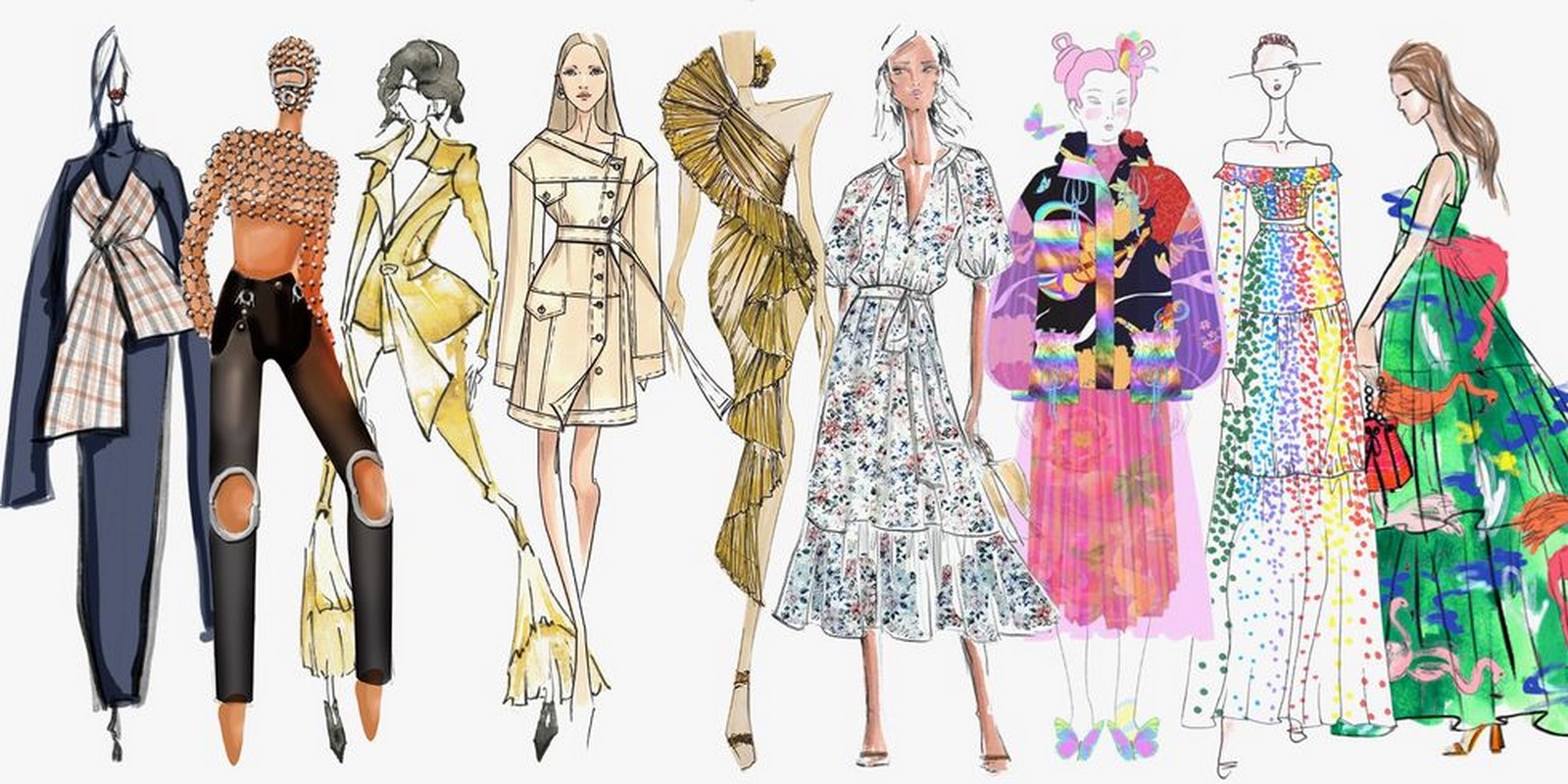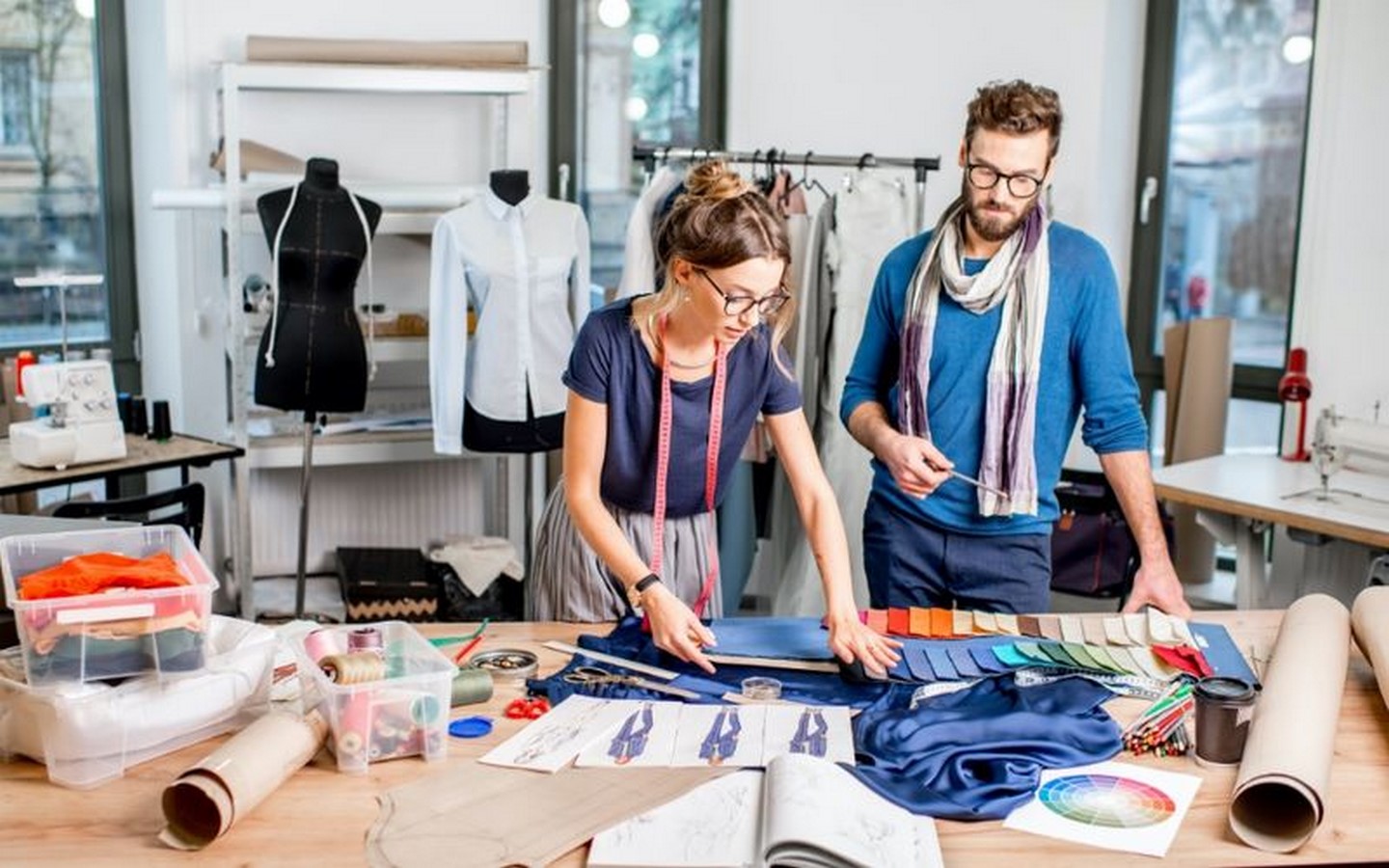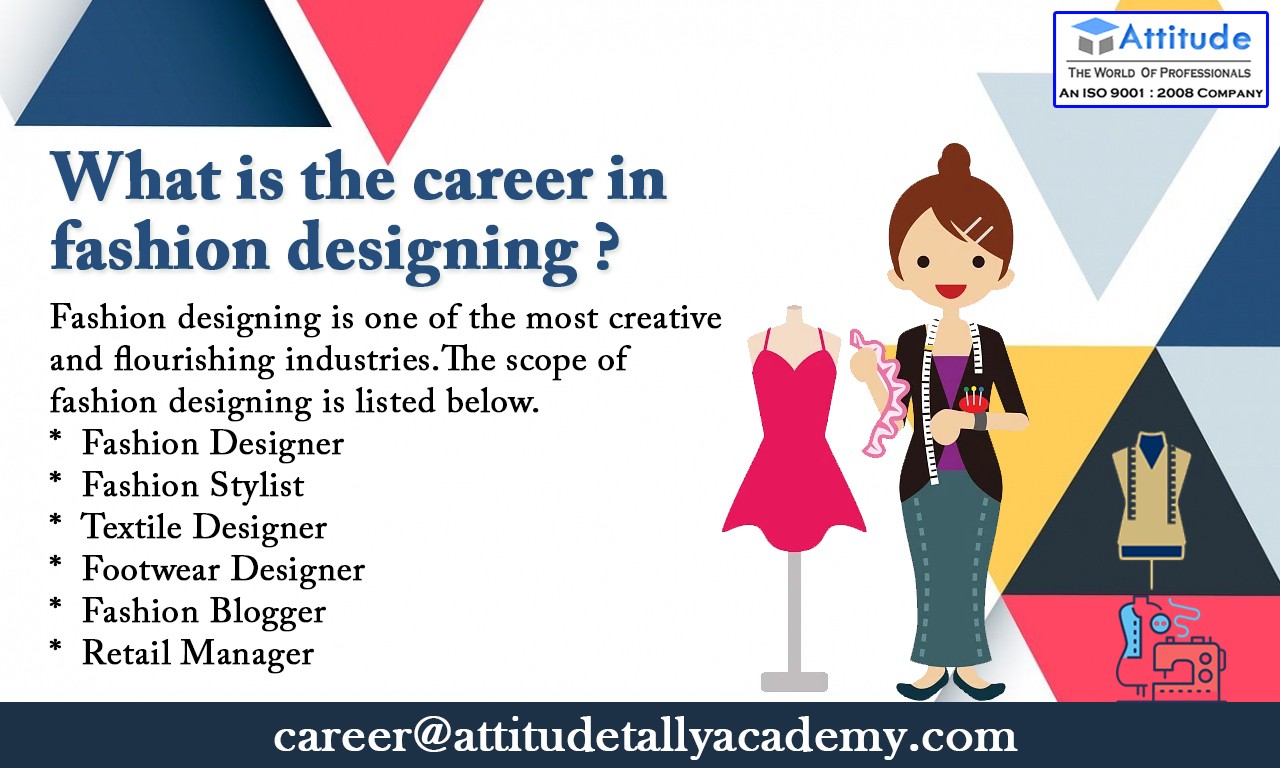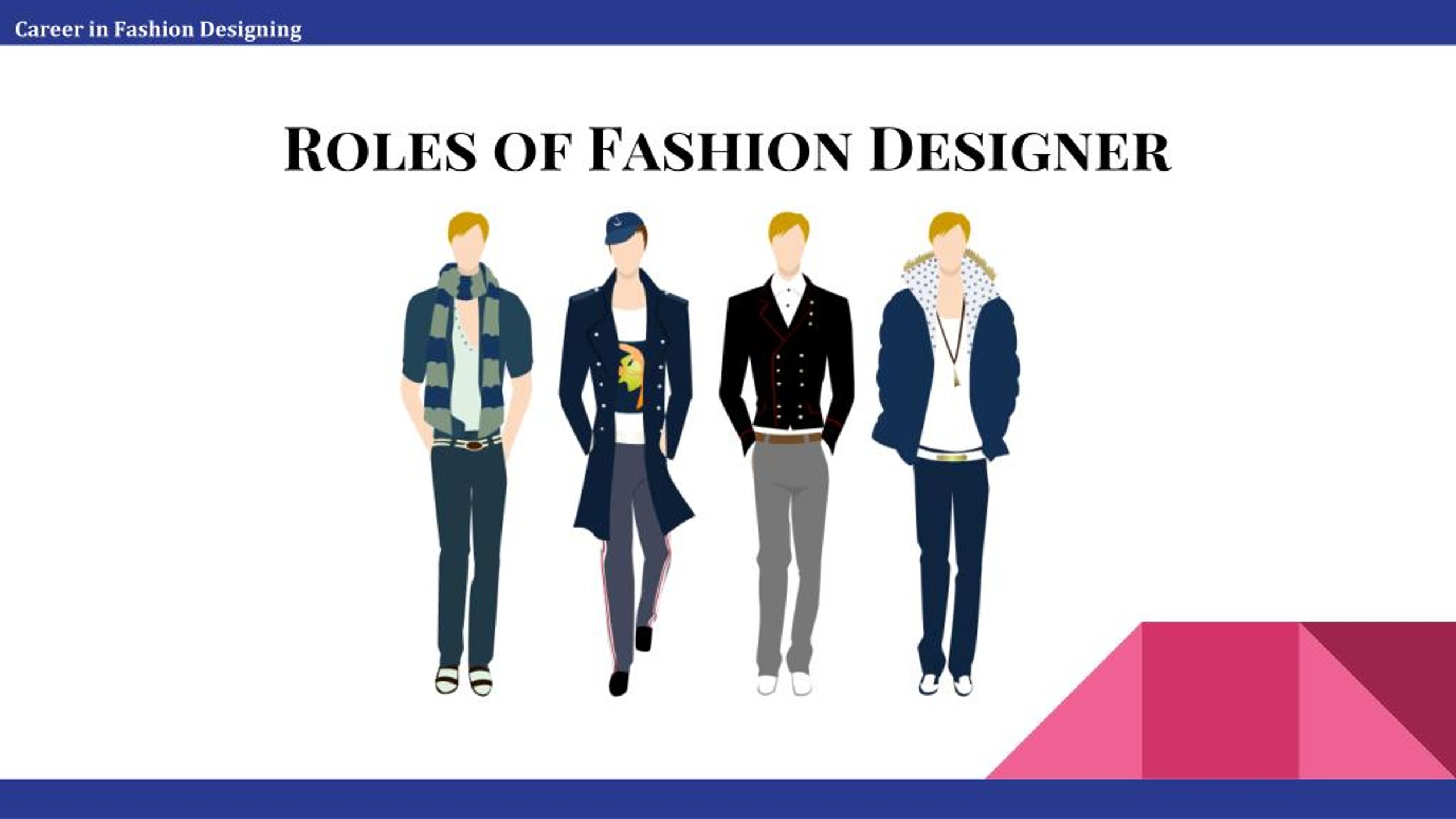A Comprehensive Guide to Fashion Design: A Career in Creativity and Commerce
Related Articles: A Comprehensive Guide to Fashion Design: A Career in Creativity and Commerce
Introduction
With enthusiasm, let’s navigate through the intriguing topic related to A Comprehensive Guide to Fashion Design: A Career in Creativity and Commerce. Let’s weave interesting information and offer fresh perspectives to the readers.
Table of Content
A Comprehensive Guide to Fashion Design: A Career in Creativity and Commerce

Fashion design is a multifaceted field that encompasses creativity, artistry, and business acumen. It is a career path that allows individuals to express their unique vision while contributing to a dynamic and ever-evolving industry. This guide will delve into the various facets of fashion design, providing a comprehensive understanding of the roles, responsibilities, and pathways within this exciting profession.
Defining the Role of a Fashion Designer:
A fashion designer is responsible for conceptualizing, designing, and developing clothing and accessories. This involves a wide range of tasks, from sketching initial ideas to overseeing the production of final garments. The scope of a fashion designer’s work can vary significantly depending on their specialization, experience, and the size of the company they work for.
Specializations within Fashion Design:
1. Ready-to-Wear (RTW) Design: This segment focuses on creating clothing for mass production and distribution. RTW designers work with manufacturers to translate their designs into commercially viable garments, often adhering to specific production timelines and budget constraints.
2. Haute Couture Design: The world of haute couture is synonymous with exclusivity and craftsmanship. Haute couture designers create bespoke garments for a select clientele, often using luxurious fabrics and intricate detailing. They are renowned for their artistic vision and meticulous attention to detail.
3. Menswear Design: Menswear designers specialize in creating clothing for men, ranging from casual wear to formal attire. The industry is witnessing a growing demand for contemporary and innovative menswear designs, offering exciting opportunities for aspiring designers.
4. Womenswear Design: Womenswear designers create clothing for women, encompassing a wide range of styles, from everyday wear to evening gowns. The industry is constantly evolving, with trends shifting rapidly. Womenswear designers must be attuned to these changes and possess a strong understanding of current fashion trends.
5. Accessories Design: Accessories designers focus on creating non-apparel items like handbags, shoes, jewelry, and hats. They often collaborate with fashion houses or independent brands to complement their clothing lines.
6. Textile Design: Textile designers focus on the creation and development of fabrics. They experiment with different materials, weaves, patterns, and printing techniques to create innovative and aesthetically pleasing textiles used in fashion garments.
7. Sustainable Fashion Design: This specialization emphasizes environmentally conscious and ethical practices in fashion design. Sustainable fashion designers prioritize using recycled materials, minimizing waste, and promoting fair labor practices throughout the production process.
The Path to Becoming a Fashion Designer:
1. Education: A formal education in fashion design is highly recommended. Many aspiring designers pursue a Bachelor’s degree in Fashion Design, which provides a strong foundation in design principles, pattern making, sewing techniques, and industry knowledge.
2. Portfolio Development: Building a strong portfolio is crucial for aspiring fashion designers. This should showcase their creativity, technical skills, and ability to translate concepts into tangible designs. It can include sketches, mood boards, fabric swatches, and samples of completed garments.
3. Internship and Work Experience: Gaining practical experience through internships or entry-level positions within the fashion industry is essential. This allows designers to learn firsthand about the production process, industry standards, and the realities of working within a fashion house or brand.
4. Networking: Building a strong network within the fashion industry is vital. Attending industry events, connecting with professionals on social media platforms, and participating in fashion competitions can help designers gain exposure and establish valuable connections.
The Importance of Fashion Design:
Fashion design plays a significant role in shaping our cultural landscape. It influences our sense of style, self-expression, and identity. Beyond its aesthetic value, fashion design has a profound impact on the economy, employing millions of people worldwide.
1. Cultural Influence: Fashion is a powerful medium for expressing cultural trends, social values, and individual identities. Designers often draw inspiration from diverse sources, including art, music, history, and current events, reflecting the changing times in their creations.
2. Economic Impact: The fashion industry is a global powerhouse, generating trillions of dollars in revenue annually. Fashion designers play a vital role in driving this economic activity, creating jobs and contributing to the success of fashion houses, brands, and retail businesses.
3. Social Responsibility: Fashion designers are increasingly recognizing their responsibility to promote ethical and sustainable practices within the industry. By using environmentally friendly materials, reducing waste, and advocating for fair labor standards, designers can contribute to a more responsible and sustainable fashion future.
FAQs about Fashion Design:
1. What are the typical job titles for fashion designers?
Common job titles include:
- Fashion Designer
- Senior Fashion Designer
- Assistant Designer
- Design Assistant
- Textile Designer
- Pattern Maker
- Technical Designer
- Fashion Illustrator
- Fashion Stylist
2. What are the typical salary expectations for fashion designers?
Salaries vary widely depending on experience, location, company size, and specialization. Entry-level designers can expect to earn a modest income, while experienced designers working for established fashion houses can command high salaries.
3. What are some of the challenges faced by fashion designers?
- Competitive industry: The fashion industry is highly competitive, with many talented designers vying for opportunities.
- Fast-paced environment: Fashion trends change rapidly, requiring designers to adapt and innovate constantly.
- Long hours: Designing and developing garments can be a demanding process, often requiring long hours and working weekends.
- Financial instability: The fashion industry can be volatile, with economic fluctuations impacting sales and employment.
4. What are some of the skills required to be successful as a fashion designer?
- Creativity and Artistic Vision: The ability to conceive innovative designs and translate them into tangible garments.
- Technical Skills: Proficiency in pattern making, sewing, draping, and garment construction.
- Knowledge of Fashion Trends: Staying abreast of current and emerging fashion trends.
- Business Acumen: Understanding the fashion market, production costs, and marketing strategies.
- Communication and Collaboration Skills: Effectively communicating design concepts to clients, manufacturers, and other team members.
Tips for Aspiring Fashion Designers:
- Develop a strong portfolio: Showcase your best work and highlight your unique style.
- Gain practical experience: Seek internships or entry-level positions to gain valuable hands-on experience.
- Network with industry professionals: Attend industry events, connect with designers and manufacturers online, and participate in fashion competitions.
- Stay informed about trends: Follow fashion blogs, magazines, and social media to stay up-to-date on current trends.
- Develop a strong understanding of the fashion business: Learn about production processes, marketing, and retail strategies.
- Be persistent and resilient: The fashion industry is competitive, so don’t give up easily.
Conclusion:
Fashion design is a dynamic and rewarding career path for individuals with a passion for creativity, artistry, and business. By pursuing a formal education, developing a strong portfolio, gaining practical experience, and staying informed about industry trends, aspiring designers can position themselves for success in this exciting and ever-evolving field. Whether they choose to pursue a career in ready-to-wear, haute couture, or any other specialization, fashion designers have the power to influence our culture, shape our style, and contribute to a global industry that continues to captivate and inspire.








Closure
Thus, we hope this article has provided valuable insights into A Comprehensive Guide to Fashion Design: A Career in Creativity and Commerce. We thank you for taking the time to read this article. See you in our next article!
